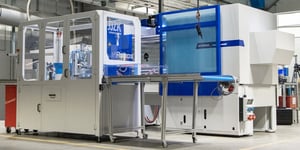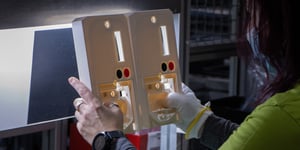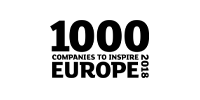
BOKASHI
WANT TO SELL OUR ORGANIC WASTE SOLUTIONS?
Welcome to your #bokashiloop journey!
The #bokashiloop concept represents the path your organic waste takes from being a food leftover to becoming a new resource. It consists of 4 main phases: collecting organic waste, processing it, using bokashi resources, and closing the whole loop.
Play the video to learn what you can expect from Bokashi Academy ↴

Bokashi Academy
01 - COLLECT ORGANIC WASTE
What you'll learn about COLLECTING ORGANIC WASTE:
- Learn what organic waste is and why correctly managing it matters for you and the environment.
- Get simple and useful tips for collecting organic waste in your household.
- See motivating examples of communities properly collecting organic waste.

Organic waste is a problem – how can we solve it?
What is organic waste in your household?
How to collect organic waste in the right way?
How do you correctly separate organic waste?
CASE STUDIES
How is legislation changing in favor of responsible organic waste handling?
How do some cities and countries manage organic waste and make an impact?
How can you benefit from properly handling organic waste?
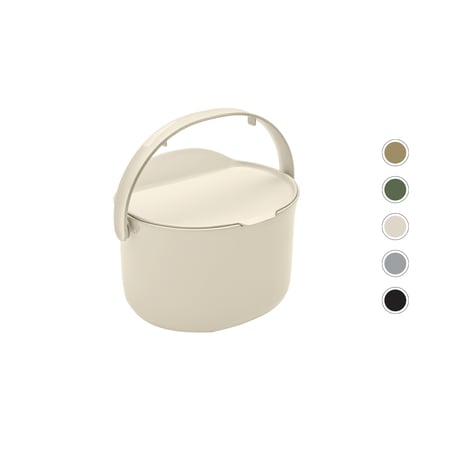
ORGANKO Daily organic waste bin
Our 3,3-liter kitchen caddy is perfect for collecting organic waste on a daily basis. It's made from post-consumer recycled plastics. It enables one-hand emptying, and all parts of the bin are dishwasher safe.
Collect organic waste in this daily bin and, once a day, empty it into ORGANKO composters, where food ferments and becomes a new resource.
Bokashi Academy
02 - PROCESS ORGANIC WASTE
What you'll learn about PROCESSING ORGANIC WASTE:
- Learn where organic waste goes when it leaves your household.
- Find your favorite solution for processing organic waste.
- See facts from our research department that thoroughly tested composting solutions.

Where does your organic waste actually go after disposal?
Why is composting an optimal way to process organic waste?
Why do you need to know about the bokashi method?
ORGANKO biogen (bokashi bran)
ORGANKO Biogen contains beneficial microorganisms and is a key ingredient during bokashi composting, since it acts as a composting accelerator.
These effective microorganisms from the bokashi bran prevent rotting - instead, your waste starts to ferment. While traditional composting takes 3 to 6 months, bokashi composting is done in half the time.

What are beneficial bokashi microorganisms?
How to ensure that the bokashi process succeeds?

ORGANKO 2, kitchen bokashi composter
This 9,6-liter designer kitchen composter fits perfectly on every kitchen counter.
Made from recycled plastics, it is not designed only for gardeners but for everyone who wants to express their eco-lifestyle. It provides you with organic fertilizer for watering your garden and a natural cleaner for your drains.
CASE STUDIES
How we cut our Bokashi Organko in half, to see what happens to the waste volume
Troubleshooting: What is OK and what is NOT OK during the bokashi process?
A look inside: What do researchers say about bokashi side-products?
ORGANKO Essential bokashi composter
With our 15,3-liter ORGANKO Essential composter and effective microorganisms, you get a fermented first-class compost base that preserves almost all nutrients.
Your plants and crop will be healthier without using artificial fertilizers, since a side-product of this Japanese composting process is bokashi liquid - serving as an organic fertilizer and a natural drain cleaner.

Bokashi Academy
03 - USE BOKASHI RESOURCES
What you'll learn about USING BOKASHI RESOURCES:
- Learn how to use side-products of bokashi composting.
- Share your resources with others and support them in their sustainable lifestyle.
- Meet satisfied Bokashi Organko users who use resources to feed the soil and grow their plants.

How can you use the fermented bokashi mass as a compost base?
What can you do with fermented mass if you don’t have a garden or plants?
How can you use bokashi liquid as a natural fertilizer substitute?
How can you use bokashi liquid as an organic drain cleaner?
CASE STUDIES
How Polona from Slovenia uses the fermented bokashi mass to enrich her soil with nutrients
How we tested the growth of Allium cepa using tap water vs. bokashi liquid
How The Waste Lab uses fermented mass to produce compost in Dubai
REENCLE electric composter
REENCLE is the first indoor electric composter with beneficial microorganisms! It's a home food waste composter that uses microorganisms to break down food waste naturally, and turn it into compost. It offers a modern solution for reducing organic waste with its quiet and energy-saving operation.

Bokashi Academy
04 - CLOSE THE #BOKASHILOOP
Organko Kitchen bokashi composter (Ocean) 🐟
This unique and black 9,6-liter kitchen composter is a logical step in the evolution of our Bokashi composting series.
The first-ever kitchen composter made 30% from hand-picked and recycled fishing nets is solving not just bio-waste problems, but also making the oceans cleaner and safer for all its inhabitants.

What you'll learn about CLOSING THE #BOKASHILOOP:
- Learn how your actions impact the entire planet.
- Meet communities that close the #bokashiloop for a healthier future.
- Connect with bokashi enthusiasts and create new environmentally-friendly groups.

How Community Composting connected people in France, Dubai, and Ecuador
How two European municipalities connected their politics and citizens with bokashi composting

ORGANKO XL, large-scale bokashi composter
The largest 120-liter XL bokashi composter is perfect for HoReCa industry and fermenting larger quantities of food or organic garden matter.
Its lid has a rubber seal to keep your waste sealed from air, an inside strainer separates bokashi liquid from your waste, and the outside tap helps you drain the liquid and

Learn more about our products from our catalog
The entire category of organic waste management is expanding
WANT TO SELL OUR ORGANIC WASTE SOLUTIONS?
Innovation and sustainability in every phase of collaborating with us
![Development supplier | Concept & Design Development]()
1 - Concept & Design Development
We offer guidance and optimization on sustainable product design, component functionality, and selecting recycled or bio-based materials. Our focus on sustainability ensures that products are both functional and environmentally responsible.![Development supplier | Engineering]()
2 - Engineering
Our commitment is to plan and execute optimized and cost-efficient plastic injection molding processes. We conduct feasibility studies and ensure the most effective TCO outcomes for our partners.![Development supplier | Tooling]()
3 - Tooling
We collaborate with trusted, long-term partners to ensure a rapid and efficient tooling process while maintaining the right storage and maintenance of the tools.![Development Supplier | Mass Production & Manufacturing]()
4 - Mass Production & Manufacturing
With a machine park featuring over 55 injection molding machines, ranging from 50 to 1,000 tons of clamping force, we can handle all product sizes. Our 15,400 m2 manufacturing area is primed for large-scale production, capable of delivering millions of units annually.![Development supplier | Tooling]()
5 - Continuous Improvements
We embrace digitalization to optimize processes, streamline workspaces, and reduce material waste. This ensures ongoing efficiency even after the project transitions to the production phase.![Development Supplier | Highest Quality-Controlled Process]()
6 - Highest Quality-Controlled Process
Our strict process control methodologies are designed to reduce material waste and minimize energy consumption, enhancing sustainability and reducing costs.![Development Supplier | Logistics]()
7- Logistics
Our approach focuses on an efficient process by minimizing transportation routes, reducing wait times, introducing green technologies, and utilizing sustainable packaging methods in the production process.![Development Supplier | Sales & Marketing]()
8 - Sales & Marketing
Our in-house capabilities in sales and marketing manage the bulk distribution, wholesale, and private label of our own-brand products, specifically designed from recycled plastics and made for responsible organic waste handling.

























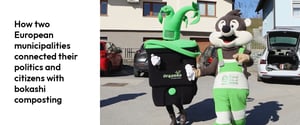
.png?width=300&name=Developing%20new%20recycled%20materials%20(1).png)

